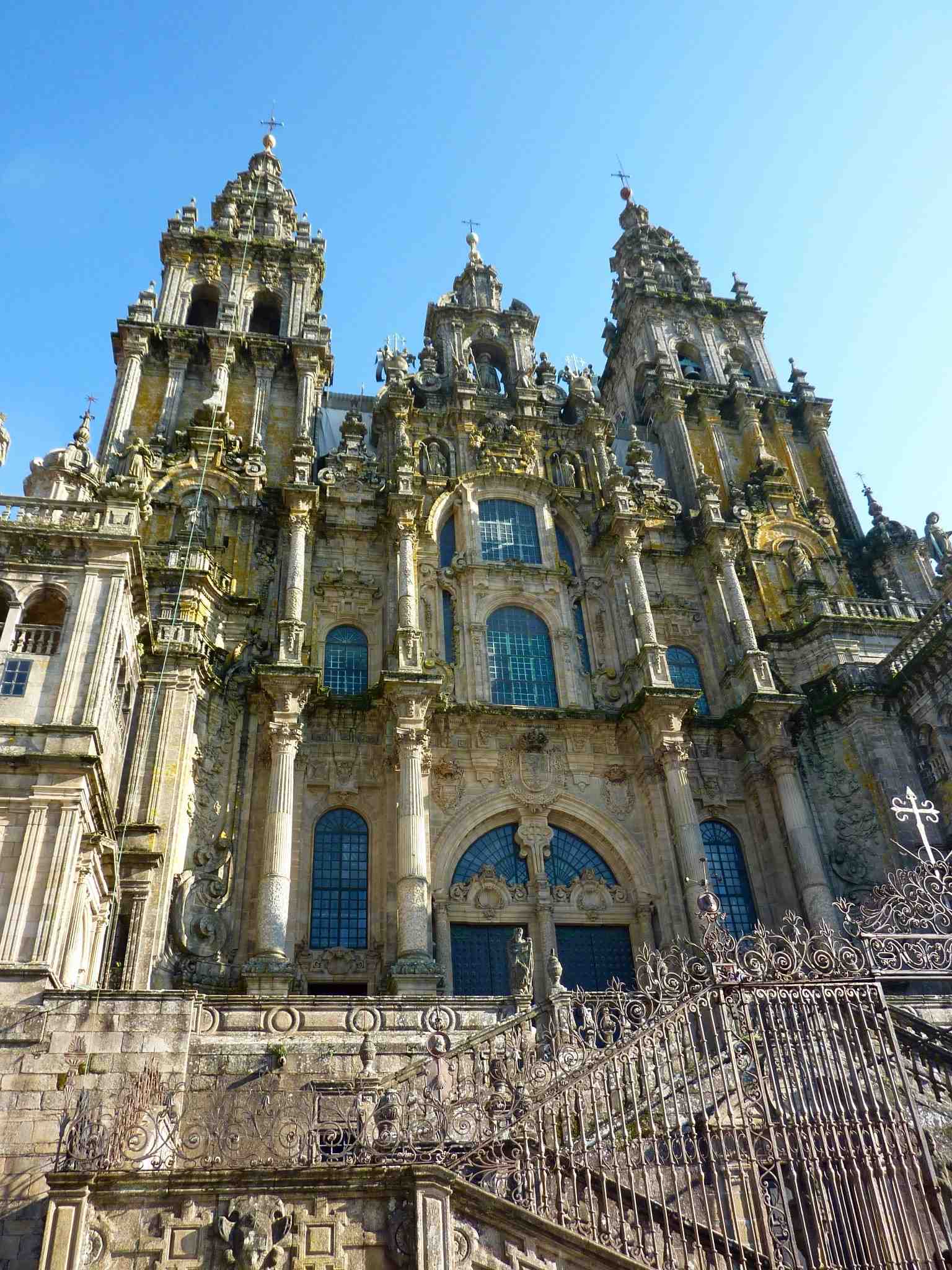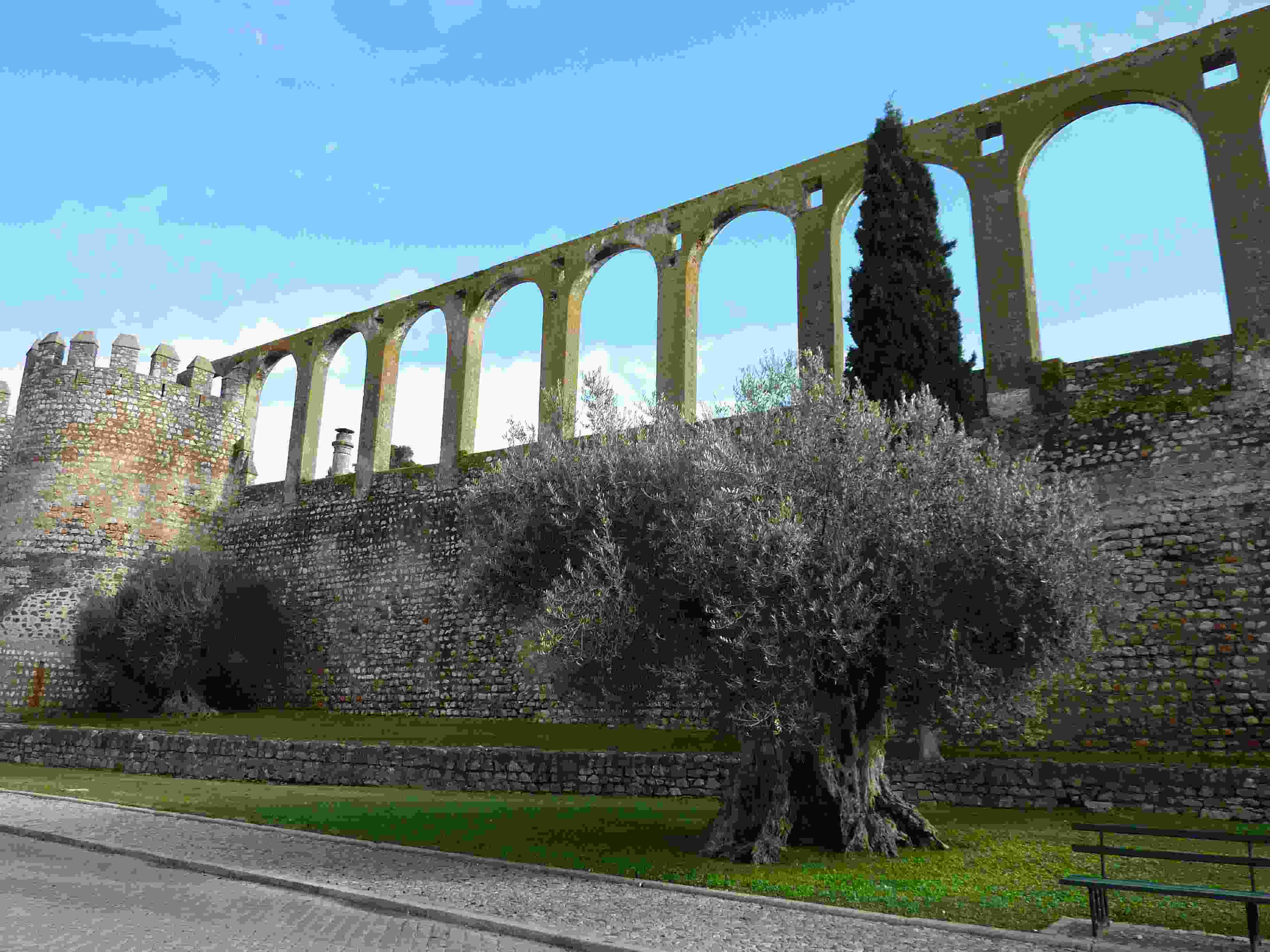Lynne Booker
The pilgrimage to Santiago de Compostela is one of the oldest forms of tourism and there are hundreds of pilgrim routes to Santiago de Compostela from all over the world. Recognised routes begin in Canada, South Africa, Japan and Australia to name only a few of the farthest flung. Having arrived at Santiago, some pilgrims continue to walk to Cape Finisterre (World´s End) where they burn their boots, following a tradition whose origins have been lost. Finisterre is 90 km from Santiago in the Spanish province of La Coruña in Galicia.
The visit of Pope John Paul 11 to Portugal in 1991 sparked off interest in re-establishing the pilgrim routes from the Algarve to Santiago. There are three routes which originate in the Algarve (in Tavira, Faro and Lagos), and ACEP Amigos do Caminho do Este de Portugal is a new organisation which superintends the route in Eastern Portugal. Pilgrim João is the collective name for the five main volunteers of ACEP who appeared for this interview in the form of Johannes. He was my guide through the history, geography and organisational details of the 952.5 km route from the church of St James in Tavira to the church of St James in Santiago de Compostela.

Legend has it that St James the Greater (Santiago in Spanish; São Tiago in Portuguese) preached in the Iberian Peninsula and when he died in Jerusalem his remains were taken by boat to the Galician coast and he was buried in in the area that is now Santiago. His remains were rediscovered in 814 by Theodomir, bishop of Iria Flavia who was guided to the spot by a star - hence Compostela (field of stars). Whilst it has never been proved that the remains were those of St James, the cult of the 1000 year old pilgrimage to Santiago may be compared with pilgrimages to the two other major Christian sites of Jerusalem and Rome.
In the early years of pilgrimage, travellers were cared for in monasteries, churches and hospitals and many people were drawn towards the route by the numbers of pilgrims who were passing. This phenomenon was a good means of repopulating deserted areas after the expulsion of the Moslem kingdoms of Iberia, and these new immigrants built shelters, bridges and roads to serve the pilgrim tourists. It was not unusual in the 12th and 13th centuries for as many as 250,000 pilgrims to set off each year in search of salvation by pilgrimage. Each pilgrim might be recognised by his staff, a gourd (the medieval equivalent of a bottle), a bag, hat and scallop shell (vieira in Portuguese). The shell came to signify Santiago as a destination (presumably because scallops were common on the Galician coast). Since it became a serious offence to attack or rob a pilgrim bearing a shell on the pilgrimage route, the shell itself became a protective sign.
The number of pilgrims went into decline because of outbreaks of plague, religious wars and the period of enlightenment and it was not until after Pope John Paul 11 made his own pilgrimage to Santiago in 1989 that numbers started rising again. In 1987 the Way of St James was recognised as a European Cultural Itinerary by the Council of Europe and in 1993 it was declared a World Heritage Route by UNESCO.
ACEP is an association of volunteers. Besides Pilgrim João a further 25 amigos provide information and support to pilgrims before they set off and they provide way signs in the form of yellow arrows, often painted on roads. It is apparently easy for pilgrims to lose their way. The team keeps in touch with their pilgrims throughout the pilgrimage, monitoring their pilgrims´ progress. Last year, 275 people set off from Tavira (75 walkers and 200 cyclists), a small but integral part of thetotal of 30,000 pilgrims beginning their journeys in Portugal. Of the 30 000, about 12% or 3 600 are over 60. The reasons people give for undertaking the pilgrimage may be religious (95%), emotional or sometimes cultural (5%). Some use the pilgrimage as an endurance test and others participate with the purpose of achieving a goal. Of the 270 818 pilgrims who have earned their Compostela ( a certificate of proof that they have completed the pilgrimage) 56% are male; 87% go by foot, 12% by bicycle and 0.5% by horse. In age terms, 29% are under 30 and 58% between 30 and 60. The overwhelming majority of pilgrims are Spanish.
In order to be accredited with a Compostela when they reach their destination, it is necessary for walking pilgrims to prove that they have accomplished at least a part of the pilgrimage on foot (100km) and for the cycling pilgrims to show that the last 200 km has been cycled. This proof is provided by means of stamps at each of the stops (given by the tourist office or the Câmara). Which means that the pilgrim must arrive during office hours. It is not necessary to do all the stages in a single journey and many people take their time for their pilgrimage. They make the most of their passage through some of the beautiful towns en route to appreciate the highlights of Eastern Portugal: Mértola, Serpa, Moura, Vila Viçosa, Estremoz, Belmonte and Guarda. Pilgrim´s rest at Santiago do Compostela could possibly be taken in a luxurious room in the 5 star parador immediately adjacent to the Cathedral.
From Tavira the pilgrimage may be achieved in 34 stages. The length of the stages ranges from a mere 10.4 km (from Guerreiros do Rio to Alcoutim) to the punishing 39.5 km (from Vilar de Barrio to Ourense in Galicia). Today´s traffic brings problems on busy roads, and Pilgrim João seeks to provide guidance for pilgrims at the most difficult points. To reduce the chances of pilgrims getting lost, ACEP´s volunteers paint and repaint their yellow arrows each spring. They perform this service at their own cost and Pilgrim João was delighted to receive a donation of 30 kg of yellow paint from the Câmara in Tavira, which leads the way in charitable donations to this group. The five individuals who make up Pilgrim João have another goal to achieve. They would dearly like to dedicate an area in the Biblioteca Municipal Álvaro de Campos in Tavira to the Way of St James. An essential part of the display in this area would be the 3 volume A Grande Obra: Dos Caminhos de Santiago; these books are a wonderful photographic celebration of the Portuguese section of the Caminho de Santiago. At present this enormous and expensive work of photographic art may be viewed in the Algarve only in the library in Vila Real de Santo António.



